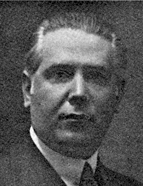

Until that university institution closed in the summer of 1931, he distinguished himself as one of the main enthusiasts for its academic life and for the unsuccessful fight against its closure. His renewed contact with Leonardo Coimbra and the Renascença Portuguesa (which grouped, albeit informally, various professors and students from the Faculty of Letters) led to a brief incursion into metaphysical thought, evidenced in his work O Fenómeno Religioso e a Simbólica [The Religious Phenomenon and Symbolics]. However, it was in the field of the History of Art that he had now established his investigative prowess, whether by his collaboration in Damião Peres’s História de Portugal, with two chapters on the history of Portuguese art, or by Virgílio Correia’s praise for the wide erudition shown in his historical, archaeological and artistic essay, O Panteão dos Lemos [The Pantheon of the Lemos].
Throughout the 1930s, Aarão de Lacerda devoted himself to teaching in Porto, taking on the chairs in Archaeology and the management of the School of Fine Arts (1939) and the course in Acoustics and the History of Music at the Conservatory of Music. He also continued his researches as a critic and art historian, active as a lecturer in the municipal course in Portuguese Studies, as the last director of the Porto Municipal Museum, and as an author for the famous German publishing house E. A. Seemann Verlag, which even today specializes in works on Art and the History of Art. Even so, he embarked on a project unparalleled as a synthesis of national art history, which led to the first volume of his História de Arte em Portugal (1942), perhaps his principal historiographical work, presenting a global conception of the whole assembly of Portuguese art up to the end of the Middle Ages. Although pertinent and solid from an academic and historical point of view, it was inscribed in the nationalist ideological matrix promoted by the Estado Novo in its attempt to emphasize the evolution of national artistic expression. Furthermore, in collaboration with Vergílio Correia and Luís Keil he had already organized various activities in the section of the National Commemorations of 1940 devoted to exhibitions of art; as a result his ideological affiliation had some impact on his historical analysis, and it was Mário Chicó and Reinaldo dos Santos who continued the work in its later volumes.
